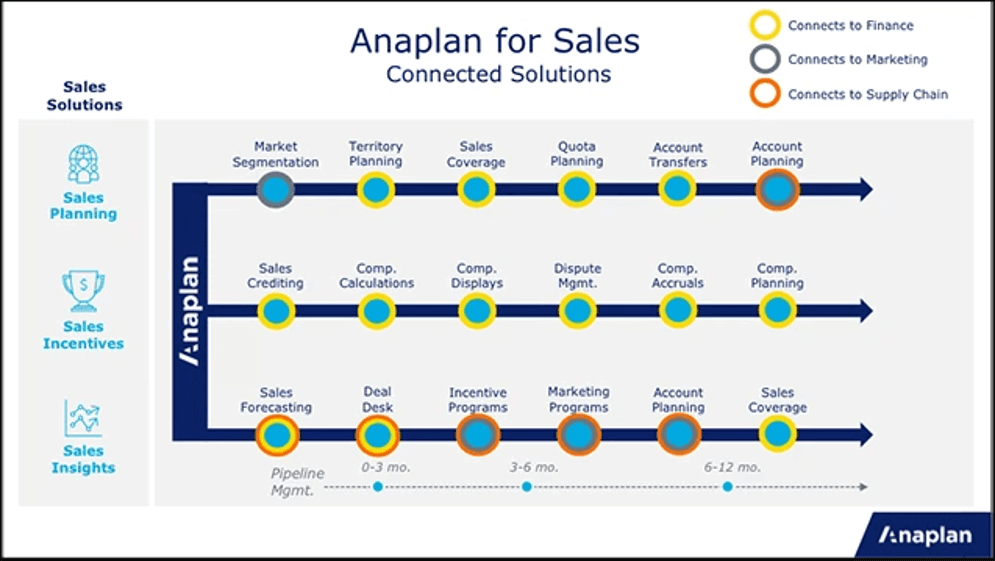The business landscape has changed over the years, predominantly due to constant technological disruptions. A well-thought-out and the differentiated product is although a cornerstone to build a loyal customer base, it is ‘not all’ an enterprise needs to formulate a competitive advantage. That is where a disciplined and effective sales process comes into the picture and to have that companies need robust sales planning, execution and performance management.
Traditionally, companies were preparing static plans which would be chalked out in sales leaders’ registers which were then replaced by commercial software for presentations or recordings. Teams would gather periodically and formulate the plans for weeks, months or quarters. Later, these were replaced by spreadsheets, which offered a certain level of convenience in terms of calculation, simple forecasting and budgeting. Around the mid-1990s, widespread adoption of emails helped with disseminating this information over a larger audience. However, it was not enough and on numerous occasions, it would lead to duplicity and miscommunication. Then came CRM solutions which are still predominantly the platform used by the sales teams.
However, with globalisation, any factor in a nook or corner of the world can impact the company’s top line.
Sales leaders should get support from all the possible sources to develop a winning go-to-market strategy. The marketing should be aware of the promotion schemes that should be executed and that should remain consistent across all touchpoints. The supply chain should be nimble and agile to quickly accommodate any last-minute changes as per the demand supply pull or any ongoing promotional campaign. The HR manager should be aligned with any workforce requirements across sales, supply chain or production. Finance team should timely review and release any additional budget requirements that might creep up due to any last-minute changes in the plan.
Given this need of the hour to quickly respond to any change, how modern sales planning should be driven? What should a typical sales planning platform look like?
The Modern Era Of Sales Performance Management:
Nowadays, organisational sales planning requires dynamicity and flexibility complemented by collaboration and quick actions. It is required to be nimble and detailed at the same.
The first step to a streamlined sales process is a well-documented (stepwise) and defined goals. It segments users based on their buying behaviour, defines steps for engaging prospects, assigns responsibilities and predicts the conversion cycle.
Secondly, adherence to the defined plan, access to supporting resources and timely reporting (measured approach) makes sure that every single piece of information is accounted for to avoid losing any opportunity.
The final stage is dynamicity into the planning. This is important as it is impossible to account for every single factor which is not under an organisation’s control (political, technological, economic, environmental, etc.). So, the adaptability into the sales processes liberates sales professionals to think out of the box and act as per any specific circumstance.
A cloud-based Enterprise Performance Management system provides the sales team with the capability to be agile while at the same time making sure everyone is on the same page and moving towards a defined goal.
Anaplan For Sales Performance Management
Anaplan offers a comprehensive set of modules to streamline your entire go-to-market strategy and manage your entire sales process from a single platform. It breaks the silos and connects cross-functional teams to formulate optimum business strategies.
Anaplan revolutionizes planning through its connected planning platform that empowers collaboration, creates a data repository and delivers actionable insights with its self-learning/predictive platform. It brings people, data & processes together giving sales leaders full visibility into the company’s business performance across geographies. Not just this the platform offers some very pertinent modules to measure your sales team performance and also empowers them to go beyond achieving their targets.
Let’s Look At Some Of The Questions That Sales Leaders Need To Answer And How Anaplan Help Them With Formulating A Winning Go-To-Market Strategy

Source: Anaplan for Sales
Where To Sell? – Identifying Markets
Understanding your target audience is the fundamental step for any sales team. Based on the data contained across CRM platforms, the sales professionals can manage opportunities, move prospects through pipeline and execute campaigns. However, to plan and forecast sales data sales leaders need to connect and model this data and reference them across functions and regions.
Anaplan provides sales leaders to drill through this data and forecast it for territory-wise planning. Further, it allows setting quotas for individual or sales teams along with segmentation of accounts or customers for better targeting.
How To Sell? – Sales Incentive
Sales responsibilities can sometimes frustrate any sales professionals, it is all about the numbers they are generating months after months or quarters after quarters. So, incentivization is the norm to keep everyone motivated, not just your employees but your distributors, retailers and suppliers as well.
However, an inaccurate or erroneous incentivization can create chaos leads to an even more dispirited and disgruntled sales force.
Anaplan helps sales leaders to monitor the performance of the workforce and allows for a timely adjustment in incentives and goal seamlessly either individually, team or territory-wise. Also, any distributor or retailer can be rewarded or given better margins per unit sales based on their performance.
What To Sell? – Sales Insights – Go-To-Market Component
Further, the sales managers can identify any effect of over-discounting or if the price-cut by any competitor is impacting the sales. With Anaplan, the decision-makers can quickly examine the impact of their decisions and can easily tweak their strategy which will be traverse through your entire organization in real-time.
Further, you can change or update any plan and it will reflect in real-time to all the stakeholders involved.
Conclusion:
The modern sales planning requires dynamicity to accommodate the changes triggered by both – some foreseen as well as unforeseen circumstances. The cause could be external: your nearest competitor or some in the form a new entrant with a new value proposition or it could be internal: your new scheme worked wonders for you or just tanked; no matter how competent your sales team is, they need updated technologies and supporting platforms to achieve their quota.
Anaplan helps forward-thinking sales leaders to plan, sell & cater effectively to customers of varying demands & generations. It is a platform that allows users to formulate innovative go-to-market strategies, fusing the years of expertise of your sales workforce with a cutting-edge technology to stay ahead of the competition.



